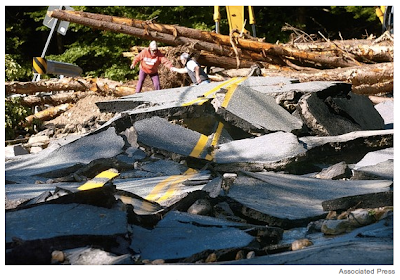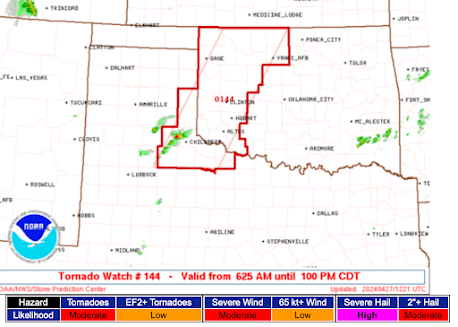Wrap-Up on Irene
I believe it is now clear to everyone that Irene was not "overhyped" by weather forecasters,
with approximately 6,000,000 still without power 4-5 days (depending on location) after the storm and communities still cut-off from the outside world, I want to close out Meteorological Musing's coverage of Irene with a remarkable time-lapse of Irene with the National Weather Service's path forecast superimposed.
While they were not perfect, I'm very proud of my colleagues at AccuWeather and the National Weather Service for superb forecasts of this dangerous storm that unquestionably saved lives and dollars. The meteorological profession came through again.
I'd now like to talk just a moment about preparedness. The Wall Street Journal has an online story just posted about "slow pace" of the recovery.
I absolutely, totally feel for these people. But, rather than complain to politicians (which is the topic of the story), I would like to suggest to readers that it is wise to prepare for future disasters and plan to be self-sufficient for at least a week whether it is an earthquake, hurricane, or ice storm.
Here is a set of links for planning for a disaster.
Do it. Tomorrow.
 |
| Associated Press photo of what used to be Route 4 in Vermont |
Hat tip: Andrea Bleistein
While they were not perfect, I'm very proud of my colleagues at AccuWeather and the National Weather Service for superb forecasts of this dangerous storm that unquestionably saved lives and dollars. The meteorological profession came through again.
I'd now like to talk just a moment about preparedness. The Wall Street Journal has an online story just posted about "slow pace" of the recovery.
Political leaders encountered frustrated residents in the northeast Wednesday, angered by days without power, continued flooding and what they perceived to be a slow government response to Hurricane Irene's devastation.
More than 1.8 million homes and businesses from Virginia to Vermont remained in the dark—with some people told they may not have power for days...
Standing with her school-age son and daughter beside her, Andrea Trout said she had Type 2 diabetes and was struggling to keep her insulin at the proper temperature because her refrigerator lost power. "I'm feeling afraid," she said. She has been in the dark since 7 a.m. Sunday.I absolutely, totally feel for these people. But, rather than complain to politicians (which is the topic of the story), I would like to suggest to readers that it is wise to prepare for future disasters and plan to be self-sufficient for at least a week whether it is an earthquake, hurricane, or ice storm.
Here is a set of links for planning for a disaster.
Do it. Tomorrow.




The storm wasn't overhyped by the meteorologists, but it was misanalyzed by the media. We saw the same thing with Katrina/Rita. Because of the severity of the Katrina damage, people overreacted to Rita, and more people died trying to evacuate than from the storm.
ReplyDeleteThere are two fundamental rules for hurricane evacuation:
1. RUN from the WATER: If you are in a low-lying area close to the hurricane track, and have a statistically-significant chance of flooding due to storm surge and/or heavy rains, you need to evacuate the low-lying area. Get to higher ground further inland. In NOLA/Katrina, much of the city is below sea level and the level of the Mississippi River. Those people need to evacuate when a major storm is headed their way. In the case of Rita, Galveston Island needed to be evacuated, because there isn't much there high enough to avoid flooding from that kind of storm.
2. HIDE from the WIND: Once you've determined you'll stay above water, evaluate the strength of your building. Will it survive the force of winds forecast for your area? If not, get to a stronger building. The local authorities should open up schools, community centers, etc., so that you can ride out the winds in safety. In many cases, these shelters are close enough to walk to, but in any event, they do NOT require a long trip on an Interstate highway. Do not confuse HIDING with RUNNING. Many people in Houston who had no need to RUN from Rita tried to do so, turning the Interstates into parking lots, and getting in the way of those who did need to run from the water. In NOLA, the French Quarter is on fairly high ground, so if there are buildings strong enough to stand the winds, the people who live there don't have to RUN.